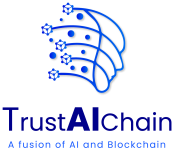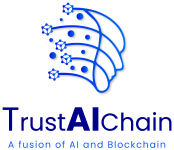The Current Landscape of Patient Data Security
Healthcare data breaches have become alarmingly common, with hackers targeting sensitive information for financial gain. The consequences of such breaches are severe, including financial losses, legal repercussions, and a loss of patient trust. Common challenges include:
- Data Breaches: Unauthorized access to patient data by external attackers.
- Insider Threats: Unauthorized access or data misuse by employees within the organization.
- Ransomware Attacks: Malicious software that encrypts data, demanding payment for decryption.
- Data Loss: Accidental deletion or data corruption due to system failures or human error.
Healthcare organizations must comply with stringent regulations such as the Health Insurance Portability and Accountability Act (HIPAA) in the United States and the General Data Protection Regulation (GDPR) in the European Union. These regulations mandate the protection of patient data and impose heavy penalties for non-compliance.
Introduction to AI and Blockchain Technologies
Artificial Intelligence (AI): AI encompasses a range of technologies that enable machines to perform tasks that typically require human intelligence. In the context of healthcare data security, AI can be used for:
- Anomaly Detection: Identifying unusual patterns in data access that may indicate a security breach.
- Predictive Analytics: Anticipating potential security threats based on historical data.
- Automated Responses: Triggering automated security measures in response to detected threats.
Blockchain Technology: Blockchain is a decentralized and distributed ledger technology that ensures data transparency, immutability, and security. Key features of blockchain relevant to healthcare data security include:
- Decentralization: Data is stored across multiple nodes, reducing the risk of a single point of failure.
- Immutability: Data cannot be altered or deleted once recorded, ensuring data integrity.
- Smart Contracts: Self-executing contracts with the terms of the agreement directly written into code, automating data access and permissions.

How AI Enhances Patient Data Security
Anomaly Detection and Prevention: AI systems can continuously monitor data access patterns and identify anomalies that may indicate a security breach. For example, if a user’s access patterns change, such as accessing patient records outside of normal working hours, the AI system can flag this activity for further investigation.
Example Code for Anomaly Detection:
Python
import numpy as np
from sklearn.ensemble import IsolationForest
# Sample data: features could be time of access, type of data accessed, etc.
data = np.array([[10, 1], [12, 2], [11, 1], [10, 1], [300, 5], [10, 1]])
# Train isolation forest
clf = IsolationForest(contamination=0.1)
clf.fit(data)
# Predict anomalies
predictions = clf.predict(data)
print(“Anomaly detection results:”, predictions)
In this example, the Isolation Forest algorithm is used to identify outliers in access patterns, which could indicate potential security breaches.
Predictive Analytics: By analyzing historical data, AI can predict potential security threats and take proactive measures to prevent them. For instance, if certain patterns are associated with past security incidents, the AI system can recognize these patterns in real-time and trigger appropriate security protocols.
Automated Responses: AI can automate responses to detected security threats, such as locking user accounts, blocking IP addresses, or alerting security personnel. This reduces the response time and minimizes the potential damage caused by a security breach.

The Role of Blockchain in Data Security
Decentralized Data Storage: Traditional centralized databases are vulnerable to single points of failure. Blockchain’s decentralized nature ensures that data is replicated across multiple nodes, making it more resilient to attacks and failures.
Immutability and Data Integrity: Blockchain’s immutability ensures that it cannot be altered or deleted once data is recorded. This creates a tamper-proof record of all data transactions, making detecting and preventing unauthorized changes easier.
Example Code for Blockchain Data Storage:
Python
from web3 import Web3
# Connect to local blockchain node
web3 = Web3(Web3.HTTPProvider(‘http://127.0.0.1:8545′))
# Sample smart contract for secure data transfer
contract_code = ”’
pragma solidity ^0.8.0;
contract DataTransfer {
mapping(address => bool) authorized;
event DataTransferred(address from, address to, string dataHash);
function authorize(address user) public {
authorized[user] = true;
}
function transferData(address to, string memory dataHash) public {
require(authorized[msg.sender], “Not authorized”);
emit DataTransferred(msg.sender, to, dataHash);
}
}
”’
# Compile and deploy contract (code omitted for brevity)
This example demonstrates a simple, smart contract for managing data transfers, ensuring that only authorized users can transfer data and that all transfers are securely recorded on the blockchain.
Smart Contracts for Automated Access Control: Smart contracts can automate access control, ensuring that data access policies are consistently enforced. For example, a smart contract could automatically grant or deny access to patient data based on predefined rules, reducing the risk of human error.
Case Studies: Real-World Applications of AI and Blockchain in Healthcare

Case Study 1: Mayo Clinic – The Mayo Clinic has implemented AI-driven systems to monitor and secure patient data. Analyzing access patterns and identifying anomalies has significantly reduced the risk of data breaches. Additionally, they are exploring using blockchain to ensure data integrity and enhance patient trust.
Case Study 2: MedRec – MedRec is a blockchain-based system that manages electronic medical records. It provides a decentralized and immutable ledger of patient data, ensuring data integrity and security. MedRec also uses smart contracts to manage access permissions, ensuring only authorized individuals can access patient records.
Case Study 3: Guardtime – Guardtime is a cybersecurity company that has developed a blockchain-based system for securing patient data. Their platform, KSI Blockchain, provides a tamper-evident record of all data transactions, ensuring data integrity and security. Guardtime’s technology is used by healthcare providers worldwide to protect sensitive patient data.
In Summary
Integrating AI and blockchain technologies offers a powerful solution to the pressing issue of hospital patient data security. AI enhances security by detecting and preventing anomalies, predicting potential threats, and automating responses. Blockchain ensures data integrity and transparency through its decentralized and immutable nature. Together, these technologies provide a robust framework for protecting sensitive patient data, ensuring compliance with regulations, and building trust with patients.
As the healthcare industry continues to digitize, healthcare providers must adopt these advanced technologies to safeguard patient data. By leveraging the strengths of AI and blockchain, hospitals can create a more secure, efficient, and trustworthy healthcare system.
Call to Action: Healthcare providers should explore the potential of AI and blockchain to enhance their data security measures. By investing in these technologies, they can protect patient data, comply with regulations, and ultimately improve patient care and trust.







